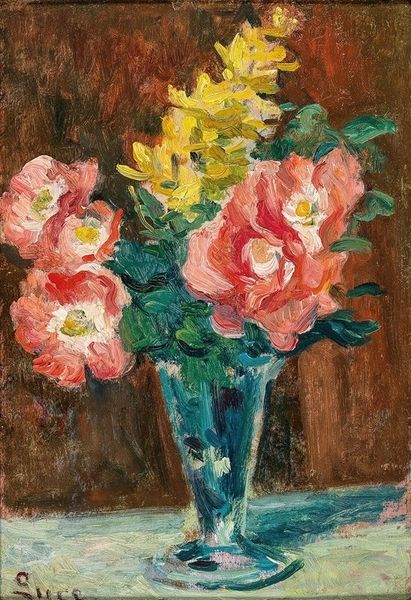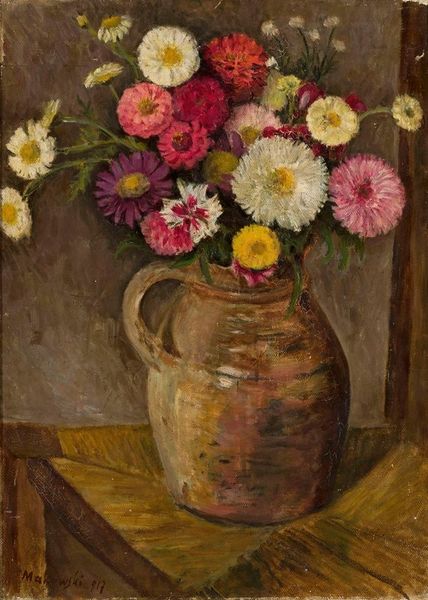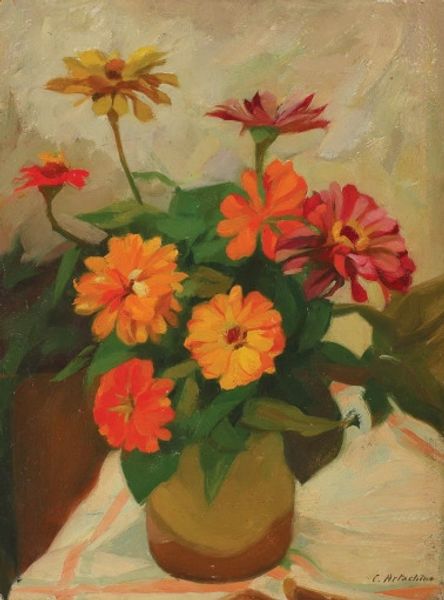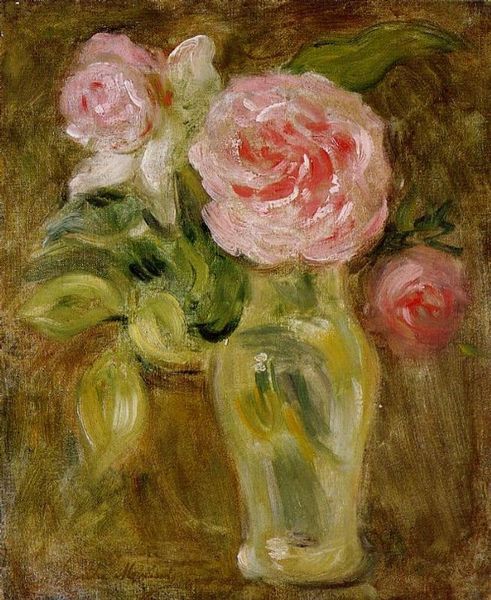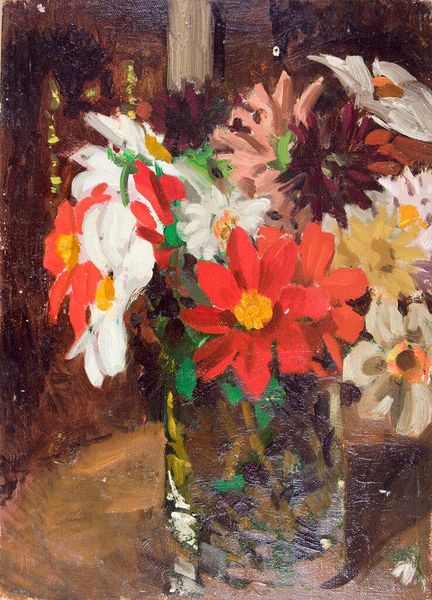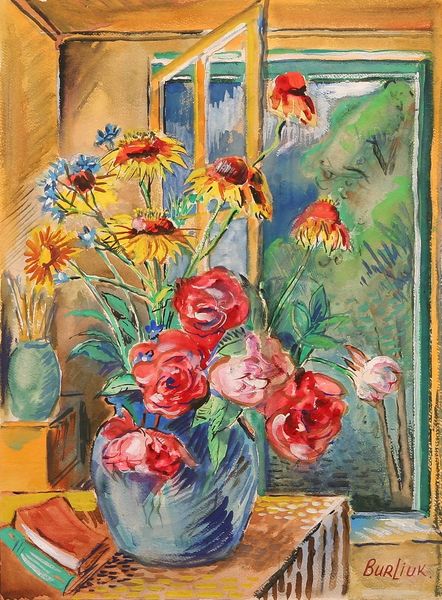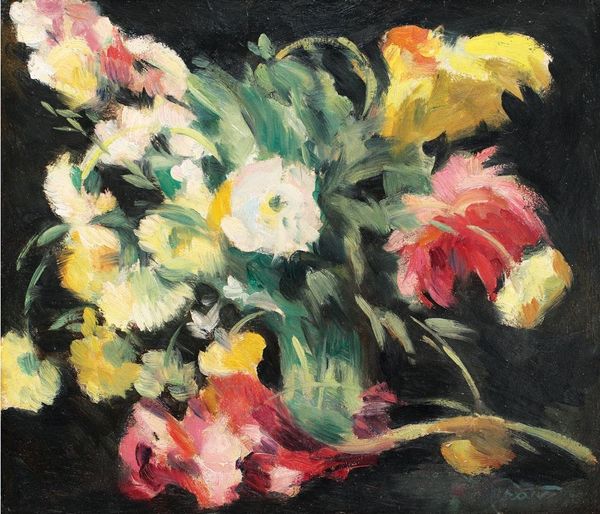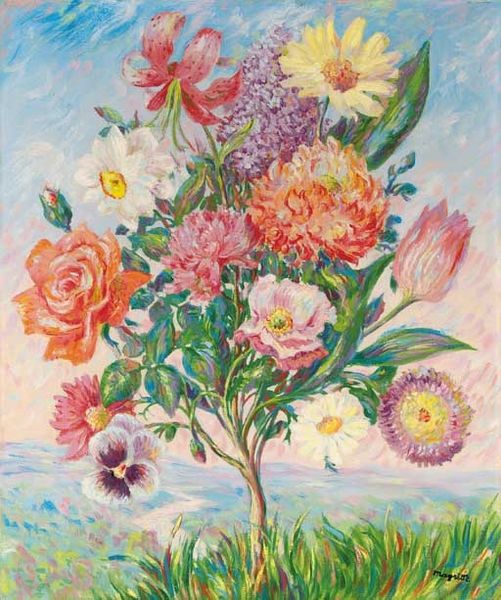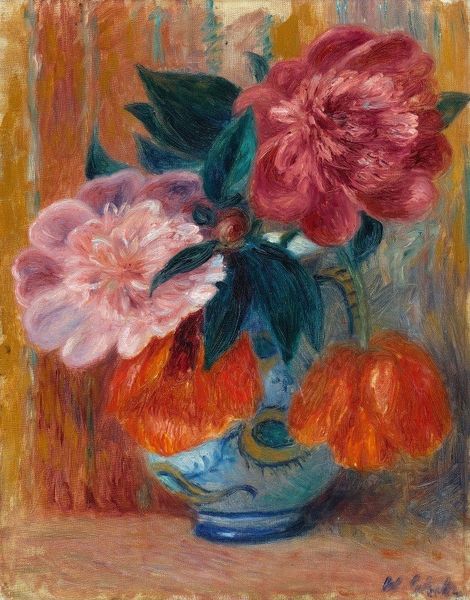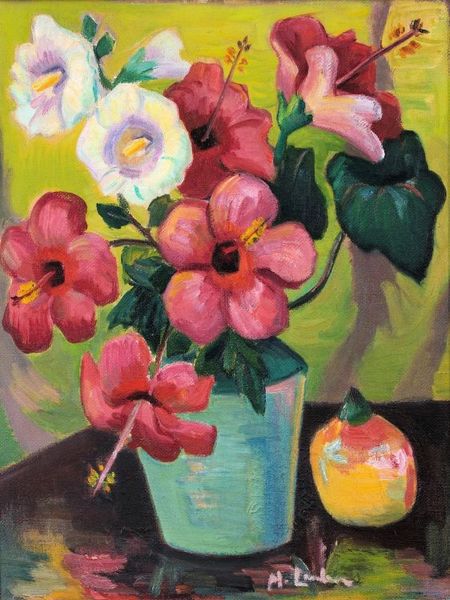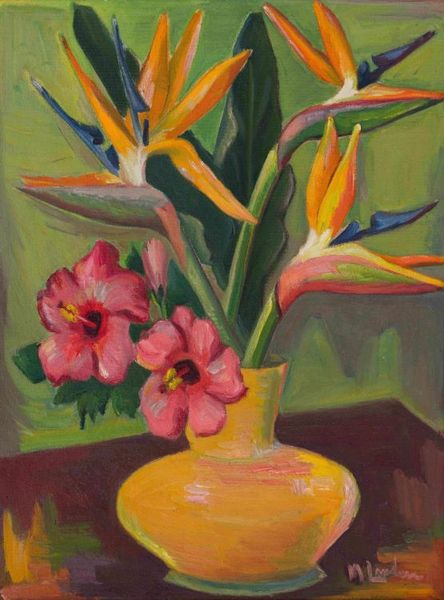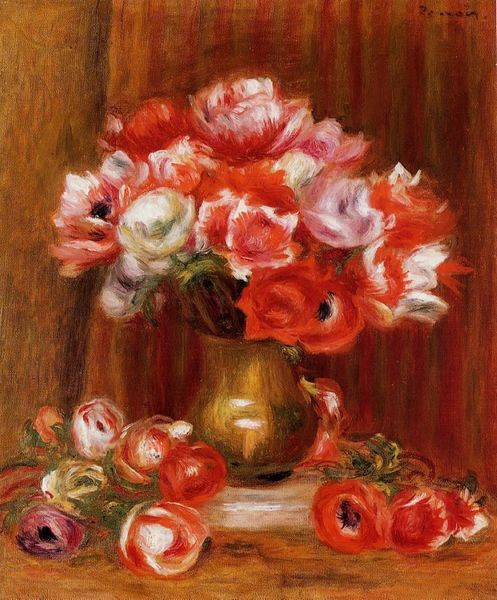
Copyright: Public Domain: Artvee
Curator: Tadeusz Makowski's "Zinnias and Asters in a Glass Jar," painted around 1920, greets us with a bouquet of vibrancy and warmth. Editor: My initial impression is one of domestic intimacy. The thick brushstrokes and glowing colors, especially the oranges and reds, really exude a certain coziness, almost as if plucked straight from a kitchen windowsill. Curator: Indeed, Makowski's engagement with Post-Impressionism, and specifically his use of impasto oil paint, elevates a rather common domestic subject, opening pathways to consider the artwork's place in debates about labor, production, and the materials of everyday life. The textures are not merely decorative, but indicative of the labor and materials inherent to its creation. Editor: Yes, the materiality jumps out! Look at how the artist built up the surface. Those impasto strokes almost feel like a sculptural rendering of light reflecting off each petal. We might ask, how do those bold marks, each deliberate application of pigment, communicate meaning? Is it simply representation or something more? Curator: I would argue it is a deliberate blurring of the line between fine art and craft, by imbuing the painting with clear reminders of the painter’s presence. Beyond a simple representation, the painting explores societal issues. For example, if the flowers can be viewed as symbolising transient beauty, we must then ask about how women’s value was considered within transient and reproductive terms. How does this image of beauty reinforce gender roles of the time? Editor: Fascinating to bring that to the forefront, while keeping sight of his physical struggle with oil paints. You know, by explicitly revealing process, Makowski’s method subtly asks, "What work makes this possible?". Who gathered the paints? What support structures, both economic and societal, did the painter require? Curator: Absolutely, engaging these flowers with socio-economic concerns demands that we remember and question hierarchies and privilege inherent in art history, the same hierarchy the very technique challenges and brings forth. Editor: A lively discussion, especially considering what may be seen as a mere “still life” at first glance. It definitely encourages looking beneath the surface. Curator: Agreed. Makowski gives us beauty with layers to unpack. These "Zinnias and Asters," ultimately, provoke a multifaceted exploration of art's engagement with materials, labor, and our cultural contexts.
Comments
No comments
Be the first to comment and join the conversation on the ultimate creative platform.
